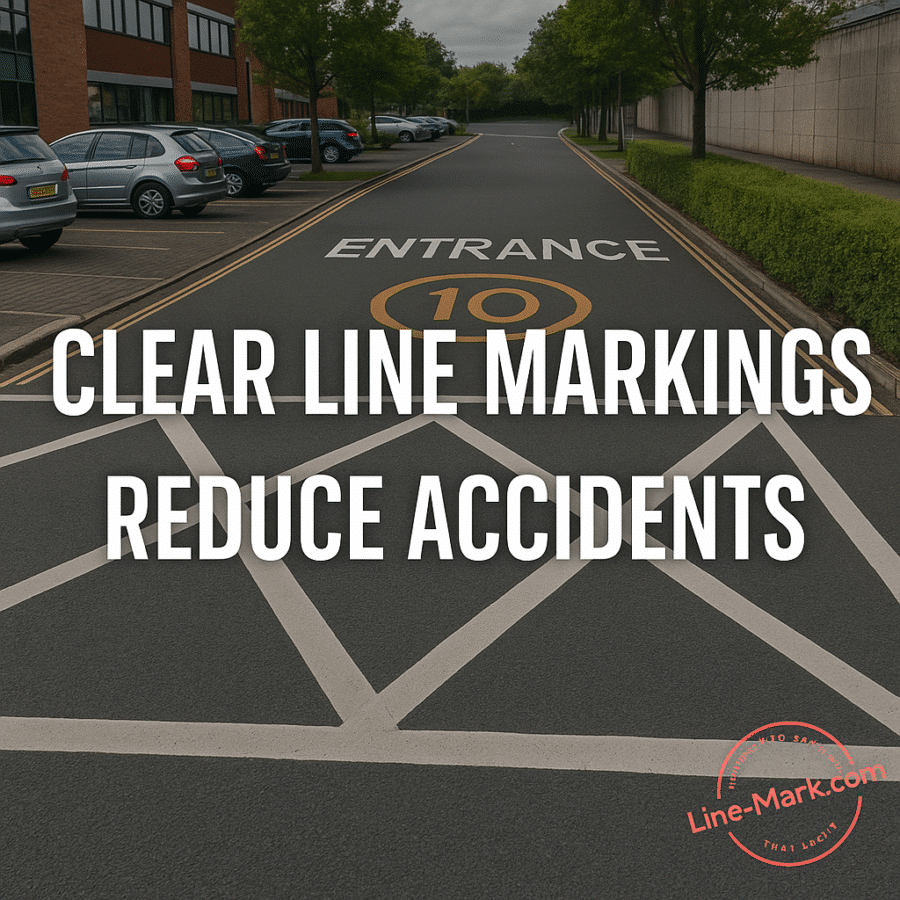Reflective vs Non-Reflective Line Markings
Excerpt: Visibility saves lives — especially in low-light conditions. Here’s how reflective and non-reflective line markings differ, when to use each, and why investing in the right system can dramatically improve safety and compliance on your site.

Reflective vs Non-Reflective Line Markings: What’s Best for Low-Light or Outdoor Safety?
In outdoor and low-light environments, visibility is everything. Whether it’s a logistics yard, car park, or access road, the quality of your line markings can determine how safely people and vehicles move after dark. That’s where the difference between reflective and non-reflective line markings becomes critical.
At Line-Mark.com, we help clients choose the right specification for each area of their site — balancing safety, durability, and cost. Let’s explore how both options perform, and how to decide which is right for you.
What Are Reflective Line Markings?
Reflective markings contain glass beads or retro-reflective elements that bounce light back to its source — such as vehicle headlights or warehouse lighting. This makes the markings appear to “glow” when illuminated, improving visibility in dark or wet conditions.
- Best for: outdoor car parks, loading bays, access roads, and dimly lit yards
- Benefits: excellent night-time visibility; enhanced safety during rain or fog; compliance with road-grade standards
- Considerations: slightly higher upfront cost; may require specialised resins for rough surfaces
Non-Reflective Line Markings
Non-reflective markings use high-pigment paints or thermoplastics designed for strong daytime visibility. They’re often used indoors or in brightly lit environments where reflective materials offer little added value.
- Best for: warehouses, factories, and well-lit loading areas
- Benefits: cost-effective, fast-drying, durable under heavy traffic
- Considerations: reduced performance in darkness or heavy rain
When to Choose Reflective vs Non-Reflective
| Environment | Recommended Marking | Reason |
|---|---|---|
| Outdoor car parks | Reflective | Headlights and weather demand visibility |
| Warehouse interiors | Non-reflective | Bright lighting makes reflectivity unnecessary |
| Access roads & service yards | Reflective | Crucial for night and fog safety |
| Loading bays with canopy lighting | Either (hybrid) | Depends on light levels and traffic flow |
Pro tip: For mixed-use sites, many clients use reflective markings for vehicle routes and non-reflective systems for pedestrian zones or interior spaces.
Maintaining Visibility Over Time
Even reflective markings lose their shine over time as glass beads wear down. Regular cleaning and periodic maintenance are essential to preserve performance — especially in outdoor environments exposed to dirt, rain, and tyre abrasion.
Not sure which system you need? Book a free site audit and we’ll assess your lighting, traffic patterns, and weather exposure to recommend the safest option.
Compliance and Best Practice
For public-facing areas, reflective line markings help meet UK Highway Regulations and Health & Safety Executive visibility standards. Indoors, BS 1710 and BS 381C provide guidance on colour coding and reflectivity for safety markings.
Stay compliant, stay visible. Our outdoor line marking teams use materials that meet or exceed road-grade specifications — ideal for car parks, distribution centres, and industrial estates.
Make Visibility a Priority
Whether you operate a 24-hour warehouse or a customer car park, visibility should never be left to chance. Reflective or non-reflective, the right line marking system prevents confusion, reduces accidents, and protects your people.
Contact Line-Mark.com today for professional advice and installation. We’ll help you choose materials designed for safety, durability, and compliance in every light condition.
Read next: Colour Psychology in Line Marking

